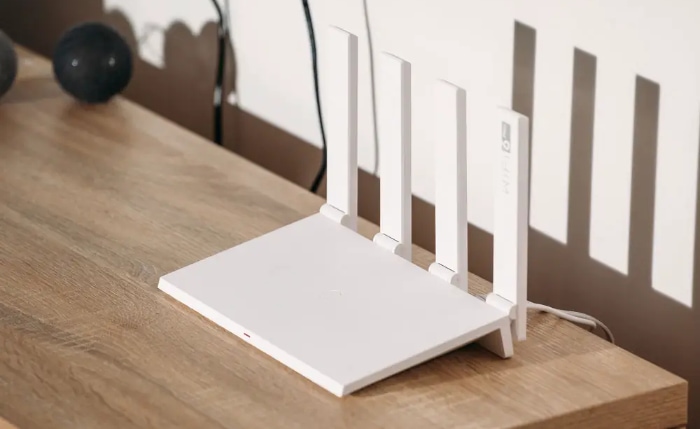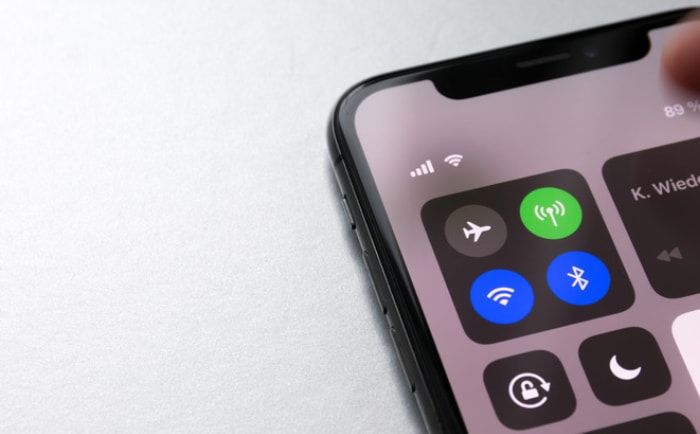What Is WPA3? Why It Matters for Your Wi-Fi

Connecting to Wi-Fi has become second nature, but have you ever wondered how secure your wireless connection really is? Recent years have exposed gaps in Wi-Fi defenses, prompting the industry to build something stronger and smarter. WPA3 is the latest upgrade to Wi-Fi security, stepping up where older protocols like WPA2 left off.
More than just buzzwords and acronyms, WPA3 introduces powerful technologies designed to safeguard your data-at home, in coffee shops, or even in enterprise settings. From tougher encryption to easier smart device setup, this protocol brings new confidence to your online experience.
Core Definition and Development
Modern Wi-Fi networks require more than just speed and coverage; security has become a top priority as technology advances. Cyber threats are evolving, and so must the protocols that keep wireless connections safe.
WPA3 arrives as the latest answer, building on the foundation of earlier protocols and introducing a refreshed approach to wireless protection.
What Is WPA3?
WPA3 stands for Wi-Fi Protected Access 3. Introduced by the Wi-Fi Alliance, WPA3 was created to provide a higher level of security for both personal and enterprise Wi-Fi networks.
The Wi-Fi Alliance, a global non-profit responsible for certifying Wi-Fi products, defines WPA3 as the newest security protocol designed to safeguard wireless communication against modern attacks. Its purpose is to address the vulnerabilities found in older standards and to offer users a more robust and resilient defense, whether they are connecting at home, in public, or at work.
WPA3 aims to provide simple yet powerful protections for all user types. From preventing unauthorized access to ensuring confidential information stays private, the protocol is engineered to maintain the trustworthiness of a network.
Definition aside, WPA3 also signals a shift in how Wi-Fi security is approached, focusing on both improved encryption methods and more secure ways for users to connect.
Evolution from WPA2
Wireless security did not begin with WPA3. Its predecessor, WPA2, had been the standard since its release in 2004, effectively serving as the default for over a decade.
However, vulnerabilities became apparent as attackers grew more sophisticated. In response, the Wi-Fi Alliance announced WPA3 in 2018, setting it as the recommended choice for all new Wi-Fi capable devices.
The protocol became mandatory for Wi-Fi 6 certification, ensuring that the latest devices support stronger security out of the box.
WPA3 differs from WPA2 in several significant ways. While WPA2 focused on providing solid baseline protection through encryption and authentication, WPA3 was engineered with specific security objectives designed to counter emerging threats.
Personal networks benefit from more powerful encryption and user-friendly protection, while enterprise and government settings receive even stronger security measures that align with the latest industry standards. Public Wi-Fi, often riskier due to its openness, is now safer thanks to WPA3’s enhancements.
The protocol also takes into account the growing number of connected smart devices, making it easier and safer to add new gadgets to a secure network.
Technical Security Enhancements

The arrival of WPA3 brings a suite of technological innovations that directly address past security weaknesses and better protect both users and organizations. These enhancements are not only more robust but also designed with modern connectivity trends in mind.
Stronger Encryption Standards
Encryption acts as the digital lock for every communication over a wireless network. WPA3 raises the bar with the introduction of 256-bit Galois/Counter Mode Protocol (GCMP) for personal networks.
This approach is a step up from WPA2, which relied primarily on the Advanced Encryption Standard (AES) at 128 bits. With GCMP-256, data transmitted between devices and routers receives an upgraded layer of protection, delivering far greater resistance to sophisticated cyberattacks.
For environments where security is absolutely essential, such as government and large enterprises, WPA3 introduces an optional 192-bit encryption mode. This aligns with the highest industry guidelines and adds layers of complexity for potential attackers, making unauthorized access extremely difficult.
Network owners gain confidence knowing that confidential information is being shielded with state-of-the-art cryptography, regardless of the scale of their operations.
Authentication Overhaul
Network authentication is often targeted by attackers looking to exploit weak credentials. WPA3 modernizes this process by introducing Simultaneous Authentication of Equals (SAE), which replaces the Pre-Shared Key (PSK) method used in WPA2.
SAE uses a more secure handshake process, making it much harder for outsiders to guess or crack Wi-Fi passwords, even when those passwords are relatively simple.
Beyond just improving the way users connect, WPA3 also adds forward secrecy to every session. With forward secrecy, even if someone manages to learn your Wi-Fi password in the future, they cannot access previous encrypted sessions.
This is a significant improvement as it protects historical data, not just current communications, offering peace of mind for both individuals and organizations.
Open Network Protection
Open public networks, such as those found in airports, libraries, or cafes, have traditionally left users vulnerable due to the lack of encryption. WPA3 addresses this with Opportunistic Wireless Encryption (OWE), which automatically encrypts each device’s connection to the access point, even on networks without a shared password.
This quiet but powerful feature means casual Wi-Fi users are safer from eavesdropping and snooping, adding a crucial layer of security to environments previously seen as high-risk.
IoT-Specific Features
Smart home gadgets and industrial IoT devices often struggle to connect safely, as many traditional security protocols were not tailored to their limited interfaces and capabilities. WPA3 responds with individualized data encryption for every device, so even if one gadget is compromised, it doesn’t threaten the security of the others on the same network.
Simplified device onboarding also streamlines the process of adding new smart devices, reducing the hassle for users while maintaining strong security standards.
Benefits for Users and Organizations

Safer Wi-Fi is not just a matter of technical upgrades-it delivers real advantages for everyone, from individual users to large enterprises. WPA3’s design addresses common headaches such as weak passwords, public network risks, regulatory requirements, and the rise of smart devices.
Enhanced Password Security
Weak or reused passwords present a major vulnerability in many Wi-Fi networks, making it easier for intruders to gain access. WPA3 significantly raises the barrier against password-related attacks.
The introduction of Simultaneous Authentication of Equals helps stop hackers who try to use brute-force or dictionary attacks to guess passwords. Even if a password isn’t particularly complex, attackers cannot rapidly try different combinations-each attempt is slowed and monitored, reducing the effectiveness of automated attack tools.
Users and network administrators gain greater confidence that their personal or organizational networks remain protected, even when human error leads to less-than-perfect password choices.
Secure Public Connectivity
Many people rely on public Wi-Fi in places like coffee shops, hotels, and airports, often without realizing how exposed their data can be. WPA3 bridges this gap by automatically encrypting traffic even when using open networks.
Opportunistic Wireless Encryption ensures that each connection is private, making it extremely difficult for nearby eavesdroppers to intercept information. Public browsing, online banking, and private communications become less risky, so individuals can connect more freely wherever life takes them.
Enterprise-Grade Compliance
Businesses and government agencies handle sensitive information that demands the most robust protections. WPA3 matches these needs by aligning with strict industry and government standards, including recommendations from top security agencies.
The protocol includes stronger encryption options and improved session management, helping organizations meet compliance requirements. IT teams can support modern workstyles-remote access, bring your own device (BYOD) policies, and more-without sacrificing security or regulatory alignment.
IoT Device Management
The explosion of smart gadgets at home and in industry brings both convenience and new security pressures. Many IoT devices have minimal configuration options, leaving networks open to threats if those devices are not well-protected.
WPA3 addresses this challenge by creating individualized encryption for each IoT device and simplifying the setup process. This means a compromised smart bulb or sensor is far less likely to put the entire network at risk.
Network owners, from homeowners to industrial operators, enjoy easier day-to-day management and stronger protection for every connected device.
Challenges and Adoption Considerations

Implementing new security protocols is rarely seamless, and WPA3 brings its own set of hurdles for both consumers and organizations. While the promise of stronger Wi-Fi protection is compelling, moving from established legacy systems to the latest standards comes with technical, logistical, and financial considerations.
Hardware Limitations
Upgrading to WPA3 often requires more than just a software update. Most existing routers, especially older models, lack the necessary hardware to fully support WPA3’s advanced features.
Users may find that only newer, certified routers and devices actually enable all enhancements. Households and businesses alike must assess their current equipment and, in many cases, invest in new access points, laptops, smartphones, and networked devices to enjoy the full benefits of WPA3.
The upgrade path can be slow, especially where budgets are tight or networks are large and complex.
Transition Complexities
Not all Wi-Fi devices move to new security standards at the same pace. As WPA3 rolls out, many environments still rely heavily on WPA2 devices.
Compatibility between the two protocols is possible through transitional modes, but it introduces complexity. Mixed-mode operation, where both WPA2 and WPA3 devices connect to the same network, can sometimes lead to configuration headaches or security compromises.
IT administrators and home users need to pay close attention to their network settings and device capabilities to maintain a smooth and secure transition.
Security Vulnerabilities
New technologies are rarely flawless upon release. WPA3, while robust, faced initial security concerns, the most notable being vulnerabilities commonly referred to as Dragonblood.
Such flaws reminded the industry that no protocol is immune to creative attacks. Ongoing vigilance through firmware updates and security patches is essential to counteract newly discovered risks.
Users and organizations must remain proactive, ensuring all hardware stays updated to avoid exposing sensitive information.
Cost vs. Security Trade-Offs
Embracing state-of-the-art security often involves a financial commitment. The need for upgraded routers and compatible devices, staff training, and additional support resources can create budgetary strain, particularly for small businesses or families.
Decision-makers must weigh the cost of adoption against the significance of risk mitigation. While WPA3 offers clear advantages, the expense of replacing or upgrading a complete set of network equipment may lead some to postpone full implementation until it becomes absolutely necessary.
Conclusion
WPA3 marks a significant step forward in Wi-Fi security, answering the call for stronger, more resilient defenses against modern cyber threats. Enhanced encryption, smarter authentication, safer public connections, and robust support for both enterprise and IoT environments all help set a higher standard for wireless protection.
While the transition brings hardware requirements, compatibility challenges, and cost considerations, the long-term benefits are clear. WPA3 offers not only peace of mind for everyday users but also delivers the sophisticated safeguards required by businesses and institutions handling sensitive data.
As connectivity continues to expand into every corner of life, embracing WPA3 isn’t just about meeting today's needs-it’s an investment in the security and reliability of future networks.


